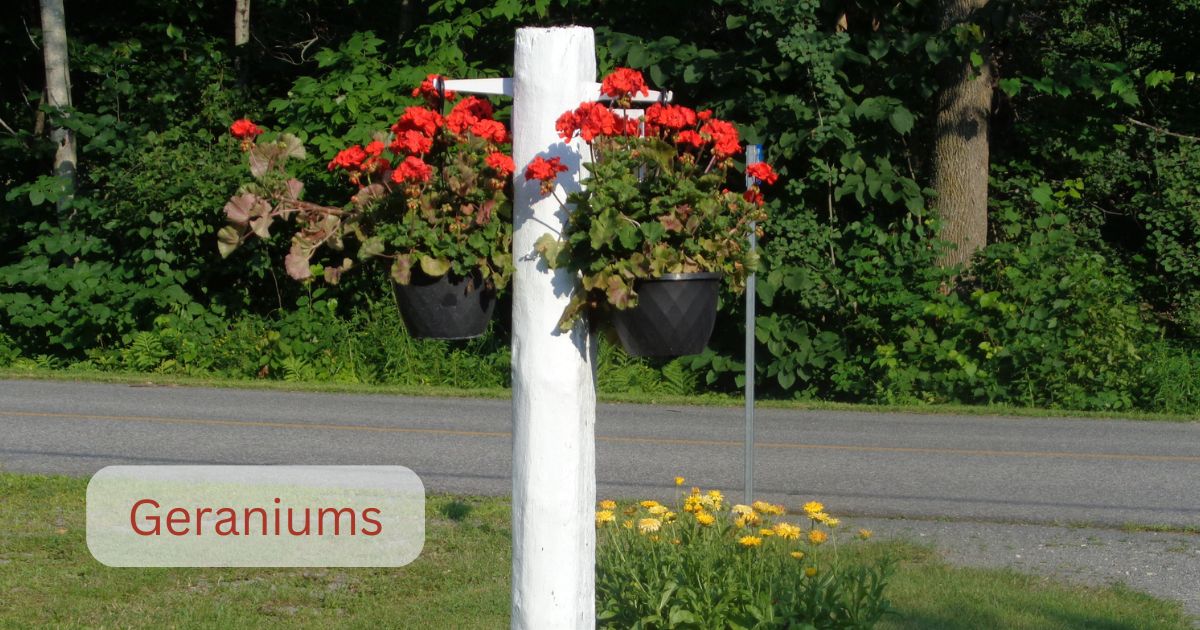Geraniums are garden classics known for their vibrant blooms and reliable growth. These hardy plants have adorned gardens for centuries, and for good reason. They offer a pop of color and are relatively easy to care for, making them perfect for both budding gardeners and seasoned pros.
A quick dive into Geranium types shows three main varieties you’ll often encounter: zonal, ivy, and scented. Zonal geraniums, probably the ones you’ve seen most, have upright growth and bright, round clusters of flowers. Ivy geraniums, with their trailing vines, are great for hanging baskets and window boxes. Scented geraniums, as the name suggests, offer fragrant leaves, adding another sensory layer to your garden.
There are plenty of popular varieties to choose from, each with unique characteristics. ‘Rozanne,’ for example, is known for its long blooming season and lovely blue petals. ‘Maverick Red’ is a showstopper with its striking red blooms. If you’re into fragrant gardens, ‘Citronella’ offers a pleasant lemon scent that can even help repel mosquitoes.
Growing geraniums isn’t just about looks alone; they bring several benefits to your outdoor space. For starters, their bright colors attract pollinators like bees and butterflies. They’re also versatile and can thrive in garden beds, containers, and even as houseplants. Plus, some varieties have pest-repelling qualities – talk about a multitasking plant!
Cultivating Healthy Geraniums: Light, Soil, and Temperature Needs
Light conditions can make or break your geranium-growing experience. These sun lovers thrive best in full sun, but they can handle partial shade. Aim for at least six hours of sunlight daily. If you’re growing them indoors, placing them near a south-facing window usually does the trick. Without enough light, you might see leggy stems and fewer blooms.
Geraniums aren’t too picky about soil, but they do appreciate well-drained, nutrient-rich ground. Use a standard potting mix and consider adding some perlite for extra drainage. This mix ensures that water doesn’t sit around the roots, which can lead to rot. If you’re planting them in a garden bed, mix in some compost to improve the soil quality and provide a nutrient boost.
Temperature can also impact your geraniums’ health. They love warmth and ideally thrive in temperatures ranging from 60°F to 75°F (15°C to 24°C). While they can tolerate cooler nights, anything below 50°F (10°C) starts to be risky. If a cold snap is coming, it’s smart to bring pots inside or provide some protection for garden plants.
Even with these ideal conditions, issues can pop up. Yellowing leaves are often a sign of overwatering or poor drainage. Make sure your pots have drainage holes and that you’re not going too heavy on the watering can. Pests like aphids and spider mites can also show up, so keep an eye out and tackle them with insecticidal soap or natural predators like ladybugs.
Practical Care Guide: Feeding, Pruning, and Overwintering
Feeding your geraniums is essential to keep them blooming and healthy. A balanced, water-soluble fertilizer works wonders. Aim to feed them every four to six weeks during their active growing season, usually from spring to late summer. Too much fertilizer, though, can lead to lots of leaves but fewer blooms—so stick to the schedule.
Pruning is another key task. Trim off any dead or yellowing leaves and spent blooms. This not only keeps your plants looking neat but also encourages new growth and more flowers. Pinching back the stems can help maintain a bushier, more compact shape. Don’t be shy; these plants are tough and benefit from a good trim.
When the weather starts to cool, it’s time to think about overwintering your geraniums. If left outside in colder climates, they’ll likely perish. For potted plants, simply bring them indoors before the first frost. Place them in a bright, cool spot and cut back watering. You’ll notice they might go semi-dormant, which is normal.
For garden-grown geraniums, you have a couple of options. You can dig them up, pot them, and bring them indoors, or you can take cuttings to propagate for the next growing season. Taking cuttings is straightforward: cut a healthy stem, remove the lower leaves, dip it in rooting hormone, and plant it in moist soil. Keep it warm and well-lit, and soon you’ll have new plants ready for spring.
Lastly, troubleshooting common problems can save your geraniums from disaster. Yellow leaves often signal overwatering, while leggy growth suggests they’re not getting enough light. If pests like aphids or spider mites appear, act fast with insecticidal soap or natural solutions like ladybugs. Regular checks help nip problems in the bud, keeping your geraniums happy and thriving.
